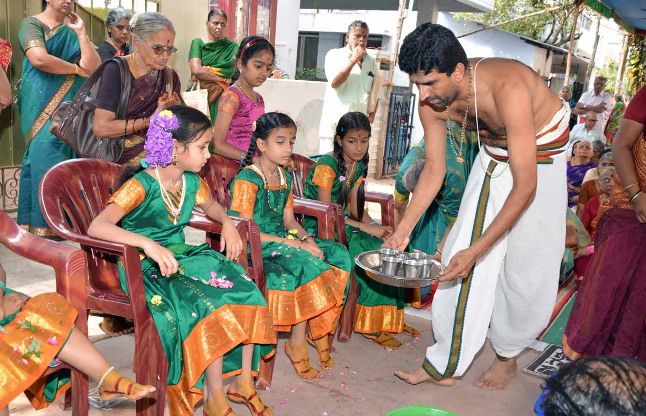In a post-modern world, the feminist movement attempts to break the patriarchal norms entrenched in society that have led to gender inequality. More often than not, like any other field, people tend to look for idols—idols to follow in their crusade and work towards their eventual goals.
Feminist idols and the nine warrior goddesses
While pseudo-feminists have made it a point to disparage the other sex to lift the fairer sex as a means to give a fillip to their movement, the true OGs understand that the movement loses its sheen when one engages in a bicep measuring contest. With the Navratri’s starting today, one might just need to take a rough gander at the beliefs of Hinduism and understand that feminist icons are a ubiquitous part of the religion that is often thrashed by the Instagram-educated wokes.
But before getting down to brass tacks, remember that in Hinduism, the male and female work and operate as one — in complete synergy. One has to evoke Radha when talking about Krishna. There’s no Ram without his Sita. Shiva is incomplete without his Shakti.
The nine forms of Maa Durga are worshipped with nine different prasad or bhog throughout the nine days. These nine forms of women range from the mild-mannered Lakshmi to a warrior goddess-like Kali. On Vijaya Dashami, the last day, a procession carrying the idols is led, and eventually, the idols are then immersed in water. Here are the nine forms of Goddess Durga:
1. Goddess Shailputri
2. Goddess Brahmacharini
3. Goddess Chandraghanta
4. Goddess Kushmanda
5. Goddess Skandmata
6. Goddess Katyayani
7. Goddess Kaalratri
8. Goddess Mahagauri
9. Goddess Siddhidatri
Read More: Why Do We Call Devi Durga “Maa” Durga – The Reason is not just Metaphorical
Creating the cosmos
If we observe the power (Shakti) and qualities of the Navdurga, we will find that in Sanatan culture, women are not only an intricate part of the belief system but also the everlasting source of power. Power and all the other emotions and experiences of the woman are acknowledged and recognized during this period. It is not the reverence and worship but their recognition and their celebration. Navratri is the worship of this feminine power source. The power from which the creation of the cosmos began.
The power is responsible for the maintenance and end of creation. The power not only gives the basis of existence by establishing balance but also paves the way for the life of mankind through its different incarnations.
Hinduism putting women on a pedestal in the literal sense
In no other religion or mythology, a woman has been elevated to the level of God. Hinduism has proudly established the ‘female form’ above ‘God’ and has described the former as the centre of all virtues, actions, knowledge, balance, spirituality, religion, and courage. Whatever good is in the universe, it has been created by the Goddesses and this in nutshell is what the Navratri stands for.
There are 4,300 religions across the globe, out of which more than 75 per cent of the global population is affiliated with Hinduism, Islam, Christianity, Buddhism, or Judaism. Of all these religions, Hinduism is the oldest, universal, and utmost comprehensive in terms of ideology.
It not only establishes equality among all sections of the society but also ensures their respect and all-around development. If we make a comparative study of the major texts of all religions and their traditions, then we will find that Hinduism has converted the principle of women’s equality and respect into reality in a true sense.
Hinduism became a way of life by breaking the narrow circles of religion and through the same way of life, the sensitivity towards women’s respect and her rights was passed along. A classic example of this lifestyle is the festival of Navratri and the celebration of women power.
